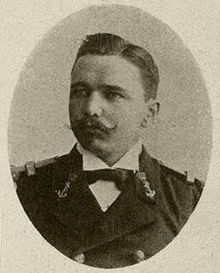
Johan Niehof
1618 – 1672
Place of Birth: Uelsen
Biography:
Johan Nieuhof was born in Uelsen, a town
in the county of Bentheim, Lower Saxony, sitting just across the Dutch-German
border. His father (originally from Zwolle) was mayor of the town, and was
later succeeded by one of Johan's brothers and brother-in-law. By the grace of
Cornelis Jan Witsen, a leading figure within the Dutch West India Company (or
"WIC"), Nieuhof left for Dutch Brazil in 1640 as a reserve
officer-candidate. From then on, barring two short family visits in 1658 and
1671, he spent all the rest of his life abroad.
He wrote An embassy from the East-India
Company containing the written account of this journey.
Netherlands

Johannes Gijsbert Willem Jacobus Eilerts de Haan
1865 - 1910
Place of Birth: Noordwolde
Biography:
Eilerts de Haan was the third son of
Frederick Anneus Eilerts de Haan who was then minister was in the Frisian
Noordwolde. Around 1868, the family of the southern part of Friesland Ternaard
moved to the north of that province when his father was pastor there.
He was educated at the Royal Naval Institute in Willemsoord,
Den Helder. Johan Eilerts de Haan's career began in September 1882 as a
midshipman third class. From 1886 to 1891 he served as a midshipman first class
first in the West Indies, then went on a sailing voyage with the Nautilus and
spent three years of the Dutch East Indies during which he was (1889),
Commander 2nd class. In 1895 he again went for three years to the East Indies.
From 1900 he was second in command for two years in the Marine Department and
in 1902 he was promoted to lieutenant 1st class. In 1903 Eilerts de Haan was
seconded to the observatory in Utrecht and in October of that year he went
again to the East Indies, where he served for three years.
Eilerts de Haan Nature Park in Suriname is
named for him.
Netherlands
Jacob van Heemskerk
1567 - 1607
Place of Birth: Amsterdam
Biography:
Jacob van Heemskerk was born in Amsterdam
in 1567. He is described as having delicate feature, large brown eyes, a thin
high nose, fair hair and beard, and a soft gentle expression. Under a quiet
exterior and plain dress were a daring nature and indomitable ambition for
military and naval distinction.
commanding the Dutch fleet at the Battle of
Gibraltar.
Netherlands
Justus Carl Hasskarl
1811 - 1894
Place of Birth: Kassel
Biography:
Justus Carl Hasskarl was born in Kassel in
the Kingdom of Westphalia. In his earlier life he studied at a plant nursery in
Poppelsdorf in 1827. And later in 1834 he studied Natural History while at the
same time, prepared himself for an expedition to the tropics.
In 1836, he traveled to Java and tried to make a living
through his knowledge in Physics and Medicine, with little success.
Subsequently he sent a request to the Governor general to work in 's Lands
Plantentuin and a year later he was appointed as assistant curator.With
director Johannes Elias Teijsmann, they rearranged their crops to taxonomic
families, which would result in the displacement of many specimens in the
botanical garden. Together they organized expeditions to various parts of modern
Indonesia and expand the number of plants collection in the Botanic Garden.
Hasskarl also proposed starting a library (Bibliotheca Bogoriensis) which was
opened in 1842 and Herbarium Bogoriense in 1844.
Legacy: The gender Hasskarlia Baill. in the family
Euphorbiaceae is named in his honor.
Netherlands
Robert Jacob Gordon
1743 - 1795
Place of Birth: Doesburg, Gelderland
Robert Jacob Gordon was the son of Maj.
General Jacob Gordon of the Scots Brigade (1572–1782) in the service of the
Netherlands. Although of Scottish descent, Robert Gordon's allegiance and
service lay with the Netherlands. He joined the Dutch Light Dragoons as a cadet
in 1753 and enrolled at the University of Harderwijk in 1759. Here he studied
in the humanities and soon proved to be of exceptional intelligence with
diverse interests. He served at first with the Scots Brigade and later joined
the Dutch East India Company, rising to the rank of colonel and commanding the
Cape garrison between 1780 and 1795 and lived in the manor house known as
Schoonder Sigt. He went on more expeditions than any other 18th-century
explorer of southern Africa. Of the six journeys he undertook, only four
between 1777 and 1786 are covered by journals discovered in 1964. He was
responsible for naming the Orange River, introducing Merino sheep to the Cape
Colony and for the discovery of the remains of Bartolomeu Dias's padrão at
Kwaaihoek in 1786. In addition to French, Dutch and English, he spoke Hottentot
and Xhosa.
As commander of the garrison, Gordon was
responsible for the Cape's defense.
No comments:
Post a Comment